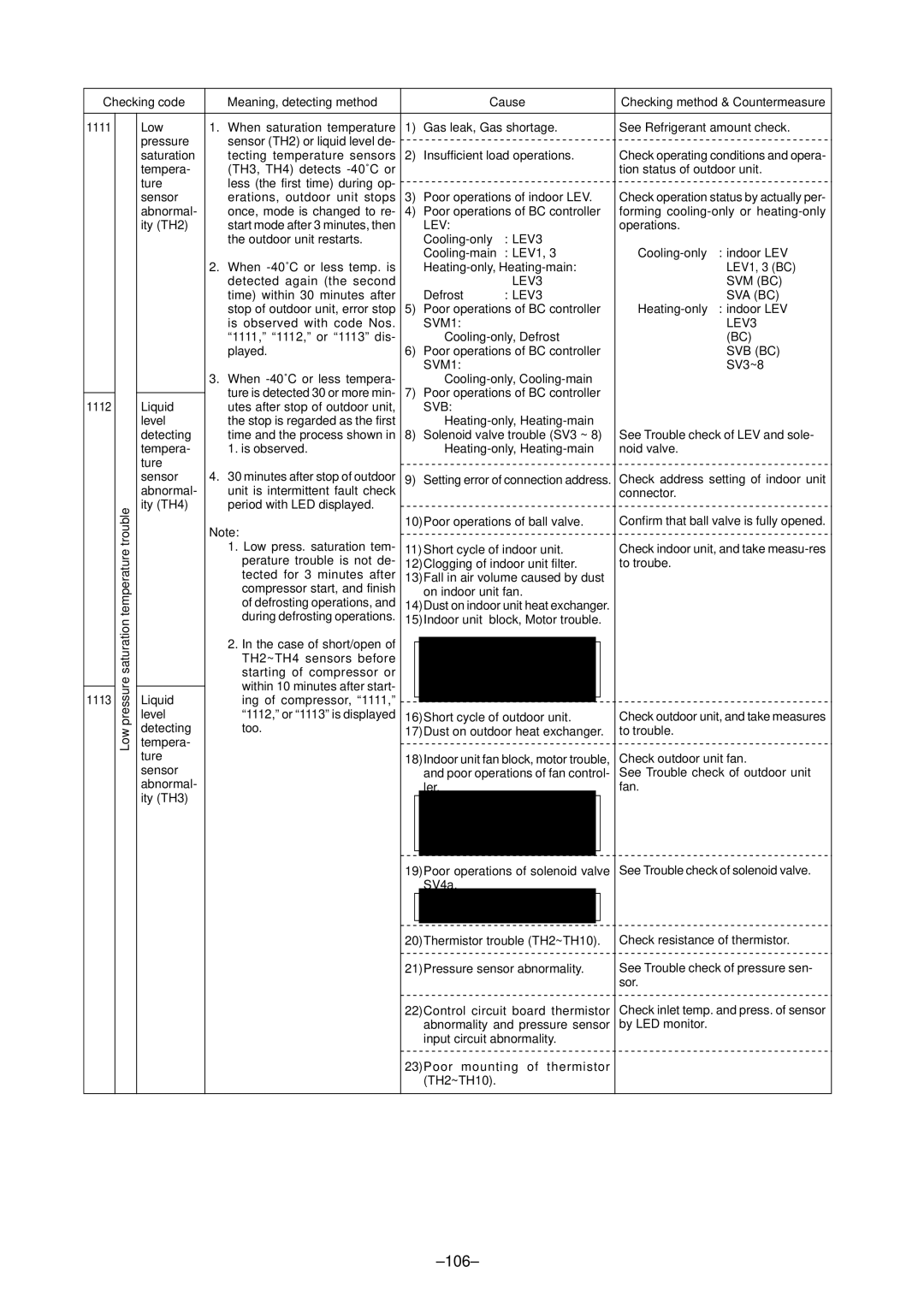PURY-P400, P500YMF-C specifications
Mitsubishi Electronics has long been a leader in the HVAC industry, known for its innovative technology and reliable performance. Among its notable offerings are the P500YMF-C and PURY-P400 models, designed to address the diverse needs of commercial and residential applications.The Mitsubishi P500YMF-C is a high-performance outdoor unit that showcases energy efficiency and advanced refrigerant technology. It employs a sophisticated inverter-driven compressor, which optimizes energy usage by adjusting its speed based on the specific heating and cooling demands of the environment. This flexibility helps to minimize energy consumption while ensuring optimal comfort.
One of the standout features of the P500YMF-C is its ability to provide consistent heating and cooling even in extreme outdoor temperatures. The unit can operate effectively in low-temperature conditions, making it ideal for regions with harsh winters. Furthermore, the system is designed with a robust build, ensuring durability and longevity.
On the other hand, the PURY-P400 is an indoor multi-split system that complements the outdoor unit perfectly. It's designed for versatility and efficiency, capable of accommodating multiple indoor units connected to a single outdoor unit. This feature is particularly beneficial for larger spaces or buildings where different zones require individual climate control.
The PURY-P400 incorporates Mitsubishi's advanced filtration technology, which significantly improves indoor air quality. It features a multi-layer filtration system that effectively removes dust, allergens, and other particulates from the air, ensuring a healthier environment for occupants.
Both systems utilize R-32 refrigerant, which has a lower global warming potential compared to traditional refrigerants. This not only makes them more eco-friendly but also complies with emerging environmental regulations. The ease of installation and operation of these units is another noteworthy characteristic, with intuitive controls and user-friendly interfaces that facilitate seamless integration into existing systems.
In summary, the Mitsubishi P500YMF-C and PURY-P400 represent a fusion of technology, efficiency, and user-centric design. With a range of features aimed at enhancing performance and environmental sustainability, these models are an excellent choice for anyone looking to invest in a reliable and efficient HVAC system. Whether for residential or commercial use, Mitsubishi’s offerings continue to set the standard in comfort and efficiency.

